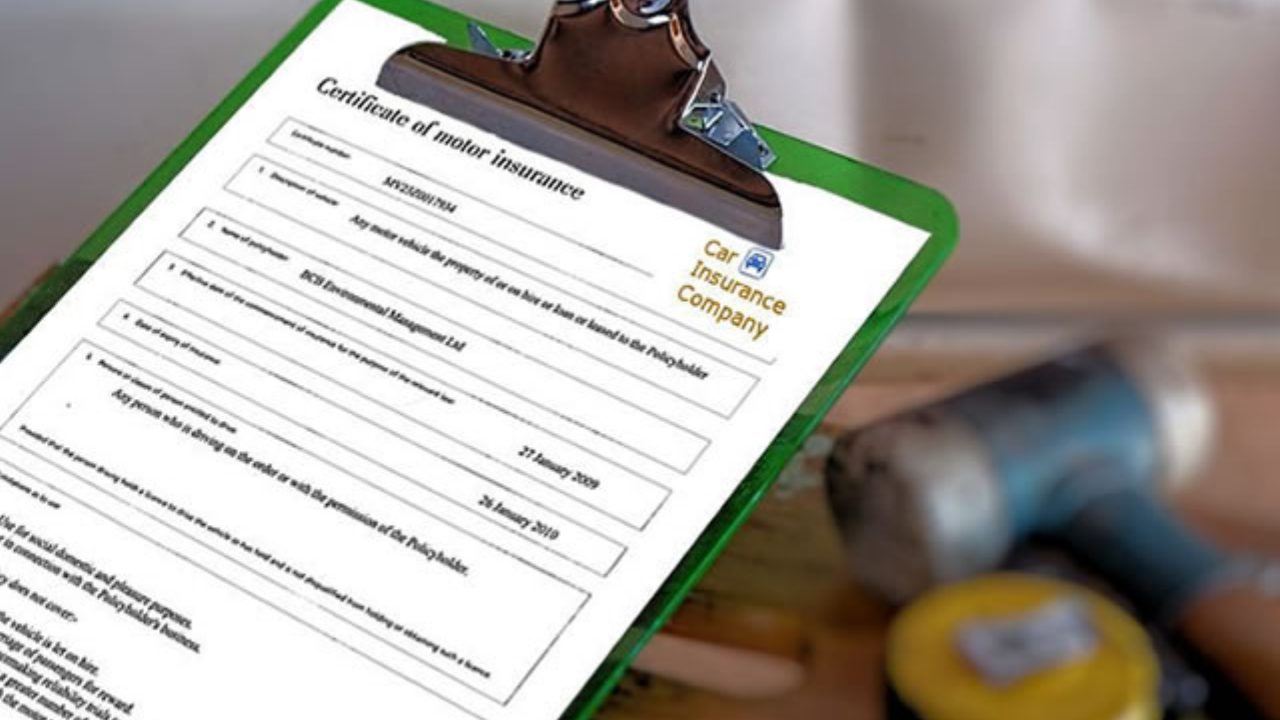Car insurance is a fundamental aspect of vehicle ownership, serving as a crucial safety net that provides financial protection in various unforeseen circumstances. At its core, car insurance is a contractual agreement between the vehicle owner and the insurance company. Under this contract, the insurance company agrees to compensate the owner for specific potential losses or damages in exchange for periodic premium payments.
One of the primary reasons car insurance is indispensable is that it alleviates financial burdens associated with vehicle-related incidents. For instance, in the unfortunate event of an accident, the insurance policy can cover repair costs, medical expenses, and liability claims, which otherwise could prove financially devastating. Similarly, insurance comes into play in cases of vehicle theft, providing compensation that can help replace the stolen vehicle.
Moreover, car insurance extends its benefits to scenarios involving natural disasters. Whether it’s damage caused by storms, floods, or fires, having a comprehensive insurance policy ensures that vehicle owners are not left to bear the financial brunt of such catastrophic events on their own. This layer of protection is particularly critical in areas prone to natural calamities, offering peace of mind to car owners.
Furthermore, car insurance is often a legal requirement. Many jurisdictions mandate that vehicle owners carry at least a minimum level of coverage. This legal necessity underscores its importance, ensuring that all parties involved in potential accidents can receive compensation for damages sustained, thus fostering a sense of responsibility and accountability among drivers.
In essence, car insurance is an essential safeguard that not only protects vehicle owners from financial loss but also promotes overall road safety and legal compliance. By understanding the basic tenets of car insurance, vehicle owners can make informed decisions regarding the coverage that best suits their needs, ensuring comprehensive protection against a wide array of risks.“`
Types of Car Insurance Coverage
Understanding the different types of car insurance coverage available is essential for making informed decisions about which policies to purchase. Each type of insurance offers unique protections and is applicable under specific circumstances.
Liability Insurance: This is often required by law and covers damages to other people’s property and injuries they sustain in an accident for which you are at fault. Liability insurance includes two forms: bodily injury and property damage. Bodily injury covers medical expenses, lost wages, and legal fees, while property damage pays for repairs to the other party’s vehicle or property.
Collision Insurance: Collision insurance provides coverage for damages to your vehicle resulting from a collision with another vehicle or object, regardless of who is at fault. This type of insurance is particularly beneficial for newer or more expensive cars, as it covers the costs of repairs or replacement beyond what liability insurance handles.
Comprehensive Insurance: Also known as “other than collision” coverage, comprehensive insurance protects against damages from non-collision events such as theft, vandalism, natural disasters, falling objects, and animal strikes. This coverage is ideal for owners looking to protect their cars from a wide variety of potential threats.
Personal Injury Protection (PIP): PIP coverage, also known as no-fault insurance, pays for medical expenses, lost wages, and other related costs for you and your passengers, regardless of who is at fault in an accident. It’s mandatory in some states and optional in others. PIP can be especially helpful for covering out-of-pocket medical expenses and other costs related to accidents.
Uninsured/Underinsured Motorist Coverage: This type of insurance protects you if you are involved in an accident with a driver who has no insurance or insufficient coverage. It covers medical expenses, pain and suffering, and repairs to your vehicle. Uninsured motorist coverage ensures you are not financially compromised due to another driver’s negligence.
Additionally, there are several optional coverages to consider, such as rental reimbursement, roadside assistance, and gap insurance. Rental reimbursement covers the cost of a rental car while your vehicle is being repaired. Roadside assistance provides help for issues like flat tires, dead batteries, and towing. Gap insurance covers the difference between your car’s actual cash value and the remaining balance on your auto loan if your car is totaled.
Choosing the right combination of coverages can ensure you are adequately protected while driving, and it’s crucial to understand the specifics of each type to make the best decision for your individual needs.
Understanding the factors that influence car insurance premiums is pivotal for any vehicle owner. Insurance companies examine several variables to gauge the risk associated with covering a driver, leading to the determination of premium amounts.
Driver’s Age and Driving Record
One of the primary determinants of car insurance premiums is the driver’s age. Younger drivers typically face higher premiums due to their lack of experience and higher likelihood of accidents. Conversely, older, more experienced drivers often benefit from reduced rates. Additionally, a driver’s record is scrutinized closely; individuals with a history of accidents or traffic violations generally incur higher premiums.
Car Make and Model
The make and model of a vehicle also play a crucial role in calculating insurance costs. High-performance or luxury cars often attract steeper premiums due to their higher repair costs and attractiveness to thieves. Conversely, safer, more economical vehicles might garner lower premiums, emphasizing the importance of considering insurance costs when purchasing a vehicle.
Location and Usage
Geographical location significantly affects car insurance premiums as well. Urban areas with high traffic densities and elevated crime rates usually see higher premiums compared to rural areas. The usage of the vehicle is another critical factor; cars driven frequently and over long distances pose a greater risk, leading to higher insurance costs.
Credit Score
In many regions, insurance companies also consider an individual’s credit score when determining premiums. A high credit score often correlates with lower premiums, as it indicates financial responsibility. Conversely, a low credit score may lead to higher insurance costs.
Assessing Risk
Insurance companies employ complex algorithms to assess risk based on these factors. They use historical data and predictive modeling to estimate the likelihood of a claim being filed, adjusting premium rates accordingly.
Tips for Lowering Premiums
To potentially lower car insurance premiums, drivers can adopt several strategies. Maintaining a clean driving record and improving one’s credit score can have a substantial impact. Additionally, opting for safer vehicles, installing anti-theft devices, and selecting higher deductibles are effective ways to reduce insurance costs. Engaging in defensive driving courses and bundling policies with the same insurer can also offer discounts.
Understanding these factors offers drivers insight into the mechanisms behind their insurance premiums, empowering them to make informed decisions and potentially reduce their costs effectively.“`html
How to Choose the Right Car Insurance Policy

Selecting the appropriate car insurance policy can often feel like a daunting task. However, by methodically approaching the process, drivers can secure coverage that best aligns with their needs. The initial step involves comparing quotes from various insurance providers. This enables potential policyholders to obtain a clear understanding of market rates and the benefits each provider offers. By aggregating multiple quotes, drivers can identify competitive pricing and comprehensive coverage options.
Equally crucial is a thorough comprehension of policy terms and conditions. Prospective policyholders should meticulously review the fine print to ascertain the inclusions and exclusions of the policy. Key elements to scrutinize include the types of coverage offered, such as liability, collision, and comprehensive insurance. It is imperative to ensure that the policy provides sufficient protection against potential risks and aligns with state requirements.
Assessing coverage options is another significant aspect when choosing the right car insurance policy. Drivers should evaluate their individual needs and consider factors such as driving habits, the value of the vehicle, and personal financial circumstances. For instance, those who frequently drive on busy roads might prioritize higher coverage limits for collision and liability, whereas others with older vehicles might opt for minimal coverage to reduce premiums.
Consideration of deductibles and limits is equally important. The deductible, which is the amount one pays out of pocket before insurance coverage kicks in, should be chosen with care. A higher deductible typically results in lower premiums but can lead to substantial out-of-pocket expenses in the event of a claim. Conversely, a lower deductible increases premium costs but reduces immediate financial responsibility during a claim.
Finally, reading reviews and seeking recommendations can provide valuable insights. Feedback from current and former policyholders offers a real-world perspective on the customer service, claim handling, and overall reliability of insurance providers. Gathering opinions from trusted sources can influence the final decision and ensure peace of mind.“`
The Claims Process
Filing a car insurance claim can be a complex process, but understanding the necessary steps can help ensure a smooth experience. Immediately following an incident, assessing the scene for safety is paramount. If there are injuries, contacting emergency services should be your priority. Once safety is secured, documenting the scene is crucial. Take clear photographs and gather pertinent details from all involved parties, including names, contact information, and insurance details.
Once you leave the scene, the next step is to contact your insurance company promptly. Most companies have a 24/7 claims hotline. Providing timely and accurate information is essential. You will need to supply the necessary documentation, which generally includes the police report, photos of the damage, and any medical reports. Your insurer will open a claim and likely assign an adjuster to your case.
Interacting with the insurance adjuster effectively can significantly impact your claims process. Be factual, cooperate fully, and provide all requested information promptly. Adjusters evaluate the damage and determine the amount the insurance company will pay for repairs. Visiting authorized repair shops often smoothens this phase, as insurers usually have partnerships with specific service providers who meet their standards and provide warranties for their work.
Understanding common pitfalls can further streamline the claims process. Avoid making repairs before the adjuster has assessed the damage: doing so might result in claim denials. Be wary of anyone pushing you toward specific repair shops without your consent. It is advisable to maintain consistent follow-up with your insurance company to stay updated on the progress of your claim.
Following these guidelines ensures an efficient claims process, from the initial assessment at the accident scene to the final repair stages. Always prioritize thorough documentation, clear communication with your insurer, and understanding your policy terms to mitigate stress and facilitate a successful car insurance claim experience.“`html
Understanding Car Insurance Discounts
Car insurance premiums can constitute a significant portion of daily expenses; however, several discounts can substantially reduce costs. One of the most common discounts is the multi-policy discount. Insurers often offer reduced rates when customers bundle multiple insurance products, such as home and auto insurance. By consolidating insurance policies, policyholders can enjoy a more manageable premium for comprehensive coverage. This discount not only brings financial benefits but also simplifies policy management by combining different insurance needs under one provider.
Another widely offered discount is the safe driver discount. Insurance companies reward motorists who maintain a clean driving record free from accidents and traffic violations. The longer a driver’s record remains spotless, the greater the potential savings. This discount serves as an incentive to cultivate careful driving habits, thereby enhancing road safety for everyone.
For younger drivers, good student discounts can provide substantial savings. Insurers recognize that students who perform well academically tend to be more responsible and disciplined. Therefore, many companies offer discounts to students who maintain a certain grade point average (GPA). The specific requirements vary, but generally, a GPA above a specified threshold qualifies students for this benefit, easing the financial burden on families.
Installing anti-theft devices in a vehicle is another effective way to lower insurance premiums. Anti-theft devices such as alarms, GPS tracking systems, and immobilizers decrease the likelihood of vehicle theft. Insurers often provide discounts to owners of cars equipped with these security enhancements, reflecting the reduced risk associated with protecting against vehicle theft.
Understanding and utilizing these car insurance discounts can lead to significant savings and provide more value for the coverage. Policyholders should consult with their insurance providers to identify all eligible discounts, ensuring they receive the most cost-effective insurance solutions catered to their individual needs.“`
Legal Requirements for Car Insurance

Car insurance laws vary significantly across regions, states, and countries, making it essential for vehicle owners to understand the specific legal requirements applicable to their location. Most jurisdictions mandate a minimum level of coverage to protect both drivers and third parties in the event of an accident. These minimum coverage requirements generally include liability insurance, which covers bodily injury and property damage caused to others in an accident.
In many regions, the law requires drivers to carry several types of mandatory insurance policies. For instance, personal injury protection (PIP), also termed as no-fault insurance, is obligatory in some states within the United States, ensuring that medical expenses for the insured are covered regardless of who is at fault. Similarly, uninsured motorist coverage is mandated in several areas, protecting against accidents involving drivers who lack sufficient insurance.
The consequences of not having the requisite car insurance can be severe. Penalties for non-compliance may include hefty fines, suspension of driving privileges, vehicle impoundment, and even incarceration in extreme cases. Additionally, if an uninsured driver is involved in an accident, they might be held personally liable for all damages, leading to substantial financial burdens. It’s crucial to abide by the local laws to avoid these adverse outcomes.
To stay compliant with car insurance laws, drivers should familiarize themselves with the specific regulations of their area. Regularly reviewing insurance policies to ensure that they meet or exceed the minimum legal requirements is advisable. Many jurisdictions also offer electronic verification systems that facilitate easy monitoring of insurance status, providing an additional layer of compliance assurance.
Understanding and adhering to the legal requirements for car insurance is fundamental for maintaining lawful driving status and safeguarding financial security. By keeping abreast of regional regulations and maintaining adequate coverage, drivers can ensure they meet their legal obligations and avoid costly penalties.
Future Trends in Car Insurance
As technology continues to evolve at an unprecedented pace, the car insurance industry is also undergoing significant transformations. One of the most impactful developments is the integration of telematics and usage-based insurance (UBI). Telematics systems, often installed in vehicles or accessed via mobile apps, collect and transmit data on driving behavior. This data allows insurers to tailor premiums more precisely, potentially rewarding safe drivers with lower rates, and fostering more personalized, fairer pricing models. Additionally, UBI programs can encourage safer driving habits by making policyholders more aware of their driving patterns.
The rise of autonomous vehicles presents another transformative trend. As self-driving technology advances, its implications for car insurance are profound. Autonomous vehicles are expected to drastically reduce the frequency of accidents, owing to their ability to eliminate human error—a leading cause of most traffic incidents. This reduction could lead to a substantial decrease in claims, thereby influencing premium structures and potentially lowering costs for consumers. However, new challenges will arise, such as determining liability in the event of a malfunction or cyberattack.
Big data and artificial intelligence (AI) are also reshaping the landscape of underwriting and claims processing. By leveraging vast datasets, insurers can enhance risk assessment accuracy, streamline claims procedures, and improve fraud detection. AI-driven algorithms enable faster and more precise underwriting decisions, offering a more efficient service to policyholders. Machine learning models continuously learn from new data, leading to perpetual improvements in predictive analytics and operational efficiencies.
Furthermore, the role of big data extends to providing real-time insights. Insurers can analyze diverse variables such as weather conditions, traffic patterns, and even socioeconomic factors to refine risk models. This level of granularity ensures more competitive pricing and optimizes resource allocation within claims departments.
In conclusion, the future of car insurance is poised to be shaped by technological advances, from telematics and UBI to autonomous vehicles and AI-driven analytics. These innovations promise to create a more dynamic, efficient, and customer-centric industry, redefining the way car insurance is perceived and delivered.
Conclusion
Car insurance is a vital component of responsible vehicle ownership, providing essential protection against financial losses from accidents, theft, and liability. Understanding the various types of coverage—such as liability, collision, and comprehensive—empowers you to select a policy that best fits your needs and budget.
If you have any questions or concerns about our Article, please reach out to our support team. We’re here to help you!








An fascinating discussion is price comment. I feel that you should write more on this subject, it won’t be a taboo subject however typically people are not enough to speak on such topics. To the next. Cheers